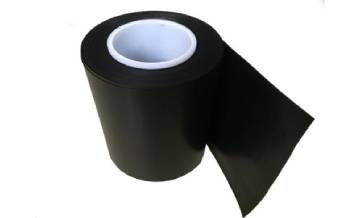The dust proof pe protective film is as easy to use as tape. However, as the width and length of the protective film strip increase, the difficulty factor will also increase in response. Handling a tape that is 4 feet wide by 8 feet long is different from the difficulty of handling a tape that is 1 inch wide by 4 inches long.
A bigger challenge is to perfectly align a large piece of PE protective film with the target surface and then lower it without creating unsightly wrinkles or bubbles on the surface, especially on the surface of irregular products that are difficult to handle.
In order to better attach the protective film to the surface of the product and make it as perfect as possible, we need at least two people. One person holds the protective film roll, while the other person pulls the torn end to the other end of the product to be protected, attaches this end to the target surface, and then manually presses the protective film into place, facing the people. This method is very labor-intensive and inefficient, but the work effect is quite good.
Another method of manually applying a large piece of PE protective film to a large piece of material is to apply the material to a film. The following describes a relatively simple method of applying large (4.5 x 8.5 feet) surface armor to 4 x 8 feet of material. You will need a roll of double-sided tape and a utility knife.

Semiconductor Pe Protective Film
Steps on how to perfectly attach the pe protective film to the product surface:
1. Prepare a suitable large and flat work space-larger than the object to be protected-clean and free of dust, liquids or contaminants.
2. Apply 4.5 feet of double-sided tape near each end of the workspace ... approximately 8.5 feet apart. These will be used to hold movies, not materials to be protected.
3. With the adhesive side facing up, unfold a short length of protective film. Make sure it is smooth and free of wrinkles, and apply the loose end evenly to one of the double-sided tapes.
4. Continue to expand the semiconductor pe protective film and place it along the length of the work surface not far from another double-sided tape.
5. Now roll up the film and place it on top of the double-sided tape. Be careful not to pull the original connected end out of the tape, adjust the direction of the film, make sure the film is straight, there are no wrinkles, and it is pulled tightly, but not too tight, so that the film will shrink later. (When the film is stretched during use, when the film tries to return to its original shape, the edges tend to pull up.)
6. Lower the film onto the second double-sided tape.
7. Using a utility knife, cut the roll from the film that is now waiting to receive the sheet to be protected.
8. Place one edge of the piece of material on one or one side of the protective film. Place it where the film is held by double-sided tape.
9. Gradually place the part on the adhesive film. Note: If the material is flexible, when you place it on the film, bend it slightly to roll it up, allowing air to escape between the material and the film.
10. To ensure that the sheet adheres to the film, apply pressure to the material, especially along all edges, to ensure good adhesion. A clean paint roller may be used for this purpose.
11. Use a utility knife to trace a part of the contour on the protective film and cut off the excess film. Remove the excess and deal with it.
12. Carefully flip the part, and if necessary, apply pressure directly to the film and work from the middle to the outside to ensure that the entire area adheres well.
13. Check the completed piece for completeness and no wrinkle coverage.
For high-volume production, it is recommended to apply a protective film using a machine commonly called a laminator. This is especially useful when both sides of the paper need to receive a protective film, as the machine can be applied to both sides at the same time.
Copyright © Shenzhen Wonder Advanced Material Co., Ltd. All Rights Reserved. |Sitemap| Technical Support: |
|
